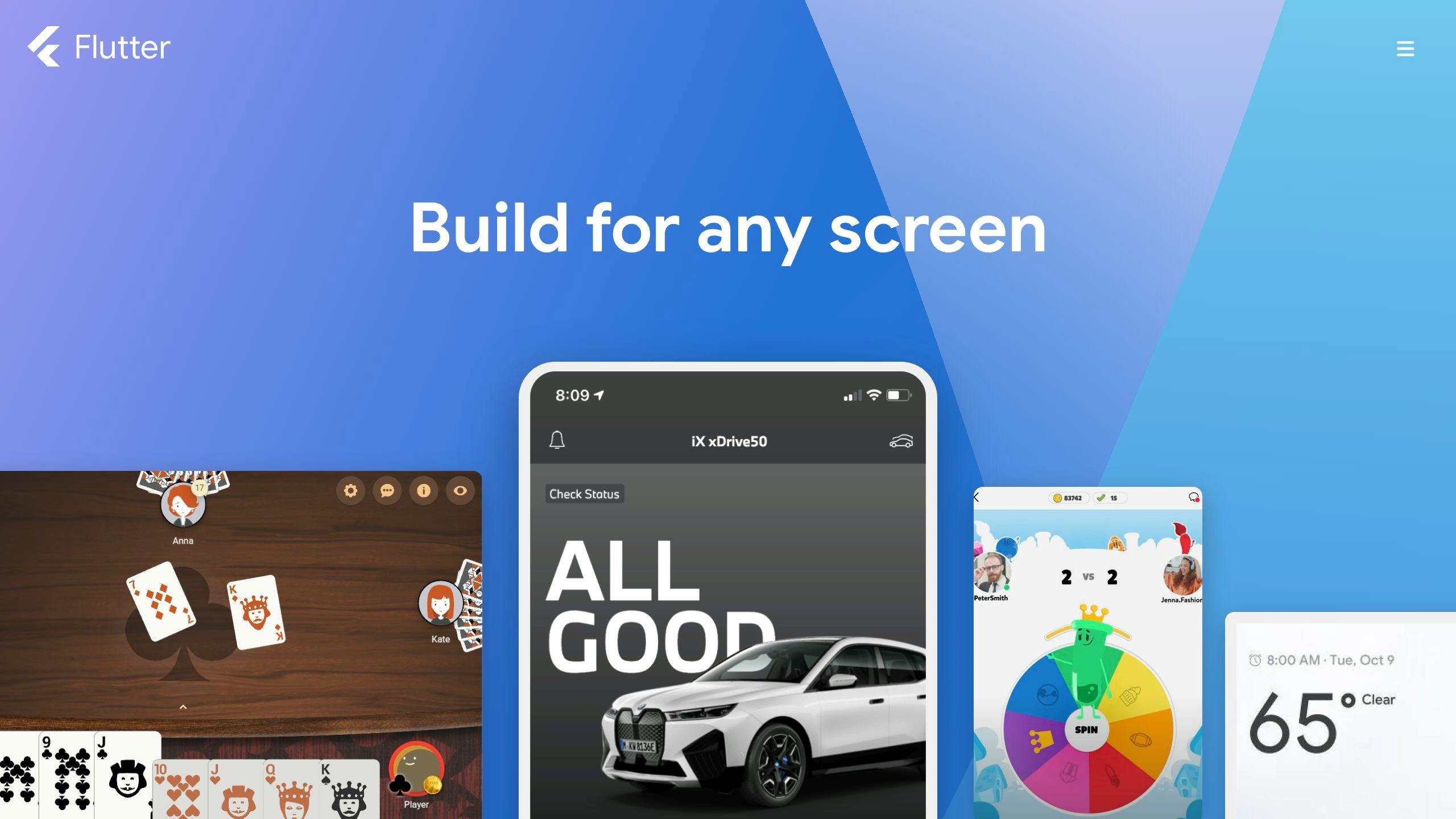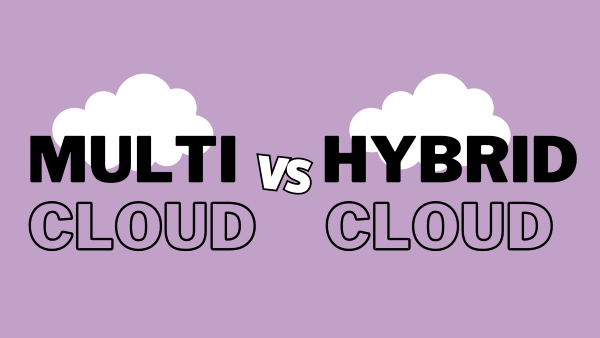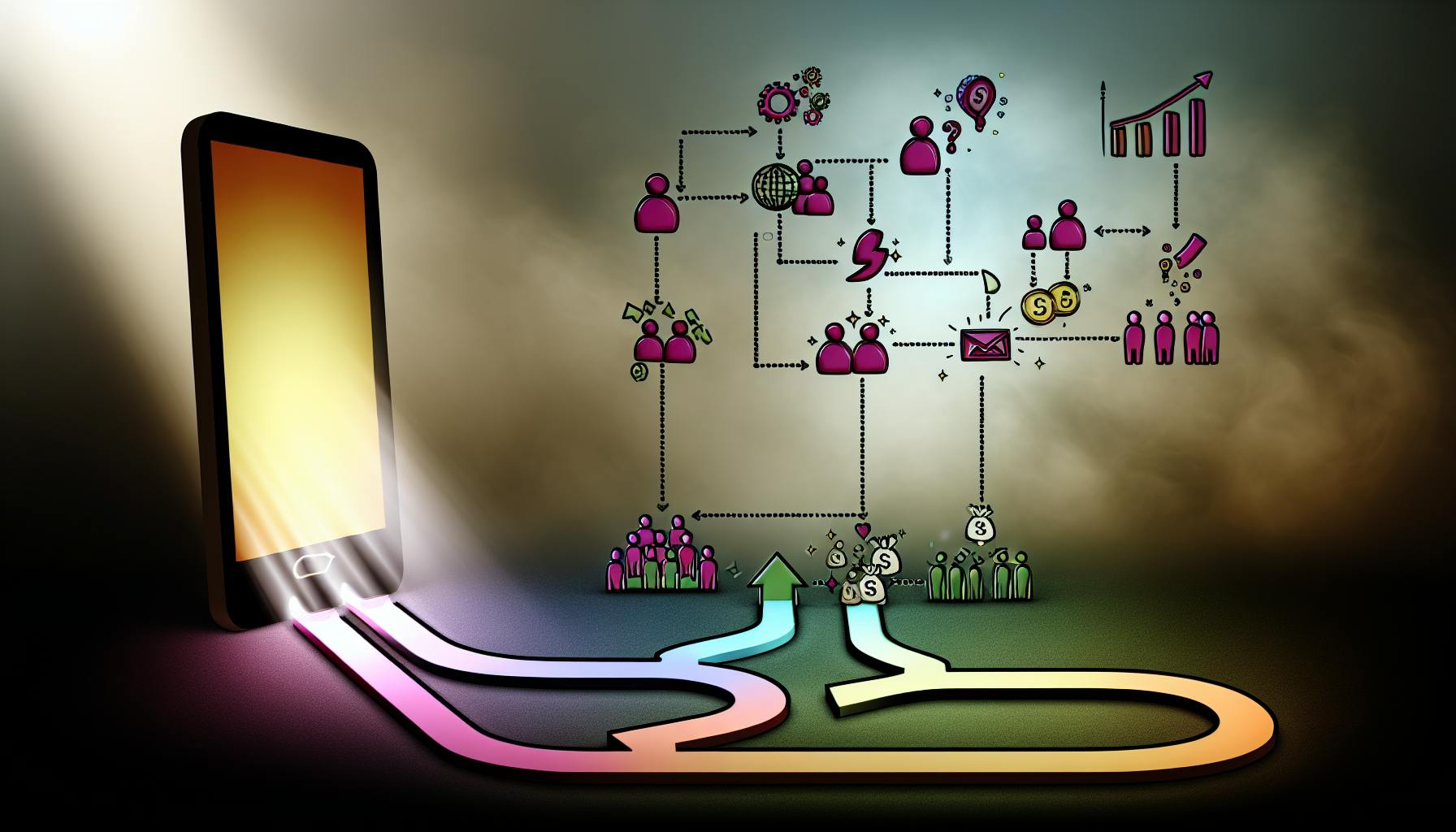Exploring iPhone development services is a crucial step for startups aiming to make a significant impact in the digital world. With over a billion active iOS devices globally, the potential to reach a vast audience and generate substantial revenue through a well-crafted iPhone app is immense. This guide simplifies the journey, covering essential aspects such as choosing the right development team, budgeting wisely, and employing effective strategies for launch and growth. Here's a quick overview to get started:
- Understand the iOS ecosystem: Over 1 billion active devices, with iOS users known for spending more on apps.
- Choose the right development approach: Decide between custom or platform-based, and native vs. cross-platform development.
- Select an experienced development team: Look for relevant experience, technical expertise, and positive client testimonials.
- Plan and budget realistically: Include costs for ongoing support and updates post-launch.
- Prioritize user-centric design: Adhere to Apple's design guidelines for the best user experience.
- Support and scale your app post-launch: Prepare for app maintenance, user feedback incorporation, and scalability to accommodate growth.
Whether you're enhancing your business or starting fresh, a strategically developed iPhone app can significantly boost your startup's visibility, user engagement, and revenue.
The iOS Ecosystem
The world of iPhones, iPads, and iPod touches is huge, reaching all corners of the globe. Here are some quick facts:
- There are over 1 billion active iOS devices out there
- The App Store is open in 175 countries and gets over half a billion visitors every week
- Developers have made $85 billion since the App Store started
- 72% of mobile app business is from iOS users
For startups wanting to reach more people and make more money through mobile apps, this is a golden opportunity. When you make an app for iOS, you're getting in front of a big group of users who love smooth, easy-to-use apps and don't mind paying for good ones. The App Store also helps people find your app with things like special collections and recommendations just for them.
As a developer, you get to use top-notch tools and features to make your app really cool and useful. In short, iOS gives your app a great chance to do well.
The Benefits of Developing for iOS
Let's talk about why making an iPhone app is a smart move for startups:
- More money-making potential: iOS users are known to spend more on apps and things inside apps. If making money is your goal, iOS is a good choice.
- Users are more engaged: iPhone users tend to use their phones a lot throughout the day. This means your app can become a part of their daily routine.
- Focus on quality: Apple checks every app to make sure it's good and safe, which means users expect and like high-quality apps.
- Access to cool tools: Apple gives you all the tools you need, like Xcode and other developer tools, to add the latest features to your app.
- Smooth user experience: If you follow Apple's design rules, your app will be easy to use and look great, which users really enjoy.
By focusing on these benefits, your startup can make an app that really stands out and connects with iPhone users.
The Importance of iPhone App Development for Startups
Creating an iPhone app can really help startups grow and connect with more people. Let's look at the main benefits:
Increased Brand Visibility
- With over 1 billion iPhones being used, your app can reach a lot of people.
- Just being in the iOS App Store can make your startup look more professional.
- Seeing your app icon on their phones helps people remember your brand.
Higher Sales and Revenue
- People with iPhones often spend more on apps and stuff inside apps.
- You can make money in different ways, like charging for your app, offering things to buy inside your app, or subscriptions.
- Using Apple Pay in your app makes it easy for people to buy things.
Improved Customer Engagement
- You can send messages through your app to get people interested, like showing them new products.
- It's easy to talk with your customers directly in the app.
- You can learn what your users like and don't like to make your app better.
Competitive Edge
- By making an app for iPhones, you can use the latest tech stuff like ARKit for augmented reality, CoreML for smart features, and more.
- Having an iPhone app makes your startup look modern and attractive to good workers.
- Apple's app store makes it easy for people to find and use your app.
In short, having a simple, easy-to-use iPhone app can really help your startup by making it more visible, earning more money, keeping customers interested, and standing out from others. Working with a team that knows how to build iPhone apps can make sure you get all these benefits.
Evaluating Your Startup's Needs
Identifying Your Target Audience
Figuring out who will use your app is super important. You need to know:
- Who is your app for?
- What problems does it solve for them?
- How will it make their lives better?
Think about who these people are, including:
- Where they live
- How old they are
- Whether they're male or female
- How much schooling they've had
- How much money they make
- What kind of phones they use
This info helps you decide what your app should do and look like to make these users happy.
Analyzing Competitors
Looking at what other apps are doing can help your app shine. Here's how:
- Try out other apps that are like yours
- Read what people say about them to find out what's not working
- Keep track of cool features you might want to add to your app
Stay on top of what competitors are doing to make sure your app stays fresh and interesting.
Understanding Market Trends
Keeping up with what's new in app development can give your app an edge. Keep an eye on:
- New tech like augmented reality, AI, 5G, and edge computing
- Design trends like simple looks and dark mode
- How to make money with your app, like subscriptions or selling things inside the app
- Getting more people to find your app with tools like App Store Connect
Staying updated and testing with real users can help you build an app that people will want to use.
Choosing How to Build Your iPhone App
Custom vs Platform-Based Development
ProsConsFull control over how your app looks and worksCosts moreMade just for your startup's needsTakes longer to makePlatform-basedEasier on your wallet
When picking between making your app from scratch or using a ready-made platform, think about what's more important for your app:
- Custom development means you can make your app exactly how you want it, but it'll cost more and take more time.
- Platform-based is a quicker, cheaper way if you're okay with some limitations and don't need anything too fancy.
Your budget, how quickly you need your app, and how special you want it to be will help you decide which path is right for you. Going custom offers more uniqueness.
Native vs Cross-Platform Development
ProsConsNativeBetter performanceCross-platformSaves money
Here's how to choose between making your app just for iOS or for multiple platforms at once:
- Native apps work best on iOS, giving you the best performance and letting you use all the cool iOS features, but they're pricier.
- Cross-platform apps can be made once and work on both iOS and other systems, saving you money and time, but they might not feel as smooth.
Think about your budget and when you need your app ready. If you want the best for iOS users and can afford it, go native. If you need to save money and time, cross-platform might be your best bet.
Planning Your iPhone App Development Project
When you start making an iPhone app, planning is super important. It helps you set clear goals, spot problems early, and make sure the app does what your users need. Let's look at the main parts of planning:
Defining Project Goals and Requirements
- Be clear about what you want your app to do from the start
- Write down all the features and things your app needs to have
- Decide which features are must-haves and which ones would be nice to have
- Think about any technical stuff that might limit what you can do
Getting everyone on the same page about what you're aiming for is key.
Researching Your Target Audience
- Find out who will use your app
- Learn what they need and what bothers them
- Figure out the main things they'll do with your app
- Create user personas, which are like imaginary users that represent your real users
This research makes sure your app fits your users perfectly.
Creating Wireframes and Prototypes
- Use wireframes to sketch out each screen and how users move between them
- Make a prototype that feels like the real app to test out ideas
- Check your designs with real users to see if they work well
This step lets you test and improve your app's design without coding it all first.
Choosing the Right Technical Approach
- Decide if your app should be made just for iOS (native) or for several platforms (cross-platform)
- Think about whether a custom solution or a ready-made platform is better for you
- Pick the programming languages, tools, and frameworks you'll use, like Swift, SwiftUI, or UIKit
Choosing the right tech makes building your app smoother.
Employing Agile Methodologies
- Break the work into short periods (sprints) for quicker feedback
- Keep a list of features to add, and tackle them one by one
- Show your app to users often to see what they think
- Be ready to change your plans based on new info
Using Agile means you can adjust as you go, making sure your app turns out great.
Good planning means faster building, less time fixing mistakes, and a better app for your users in the end.
Choosing Between Outsourcing and In-House Development
When you're thinking about getting your iPhone app made, you might wonder whether it's better to hire an outside company (outsourcing) or make your own team (in-house). Both choices have good and bad points, depending on what your startup needs.
Pros and Cons
ApproachProsConsOutsourcing- Access to experts
- Saves money
- Can adjust team size easily- Might be hard to talk with them
- You don't get to oversee everything
- Risk of sharing your ideasIn-House- You're in control
- Easy to talk with your team
- Keeps your project going long term- Costs a lot to start
- Limited to your team's skills
- Takes longer to get going
Outsourcing lets you use experts from anywhere, which can be cheaper and quicker, but might make talking and keeping an eye on your project harder. Having your own team means better communication and control but costs more and limits you to the skills of your team.
Factors to Consider
Here are some things to think about when deciding if you should outsource or build an in-house team:
Budget
- Outsourcing can be cheaper because you don't have to pay for an office or full-time salaries.
- Having your own team means paying for everything, which can get expensive.
Timelines
- Companies you outsource to might work faster because they're used to it.
- Setting up your own team takes time.
Communication Needs
- Working with a team in another country might make talking hard.
- Your own team is right there with you, making it easier to work together.
Control and IP Protection
- With outsourcing, it's harder to keep an eye on your project and keep your ideas safe.
- Your own team gives you more control and keeps your ideas in-house.
Expertise and Capabilities
- Outsourcing gives you access to people who specialize in what you need.
- Your in-house team might not know how to do everything, especially new or complex things.
Thinking about these points can help you decide which way to go. Remember, what works best might change as your startup grows.
sbb-itb-8abf120
Budgeting and Cost Estimation
Cost Influencing Factors
When planning how much money you'll need for making an iPhone app, several things can change the total cost:
Complexity and Scope
- The more complicated and wide-ranging your app is, the more it will cost. Features like 3D graphics or needing a lot of data storage make things more complex.
- If your app needs to work on different devices or has many parts, it will need more work and money.
Custom vs Out-of-the-Box Features
- Making special features just for your app takes more time and skill than using things that already exist.
Development Team's Experience
- Teams that have been making apps for a long time usually charge more but can get things done faster and better. Newer teams might be cheaper but slower.
Location
- Where your development team is based can affect costs. Teams in some countries charge less than those in others.
Post-Launch Support Needs
- Don't forget to set aside money for fixing bugs, adding new features, and other updates after your app is out. Think about saving roughly 20% of your starting budget for each year after launch.
Testing and Quality Assurance
- Spending more on testing your app before it launches can save you from big headaches later. This part of the process needs extra money too.
Creating a Realistic Budget
Here's how to figure out a good budget for your app:
Define Exact Feature Requirements
- List everything your app needs to do and have. This helps you know how much work is involved. Decide what you must have and what would be nice to have.
Research Average Market Rates
- Look up how much developers usually get paid for their work. This helps you understand what to expect in terms of costs.
Get Quotes from Multiple Teams
- Ask different companies how much they think your project will cost. This gives you a range to work with.
Pad Estimates by 20-30%
- Add an extra 20-30% to your budget just in case things end up costing more than expected.
Plan for Post-Launch Expenses
- Remember, you'll need to keep spending money on your app even after it's launched, for things like updates and new features. Plan to spend about 15-20% of your initial budget on this each year.
Setting up a budget means knowing exactly what you need, checking out how much it usually costs, getting different price ideas, adding a buffer for surprises, and remembering future costs. This way, you can make a budget that's close to what you'll really need.
The Development Process
Discovery and Planning
Starting an iPhone app begins with figuring out what you want the app to do. This step includes:
- Thinking of app ideas and deciding what the app will focus on
- Choosing the most important features to keep things manageable
- Making up profiles for your typical users
- Laying out all the technical details and what you need to build the app
- Checking if your plan makes sense with your budget and how long you have to build it
Getting all your ducks in a row before you start helps make sure you can build your app the way you want, without going over budget or time.
Design and User Experience (UX/UI)
Once you've got a plan, it's time to design the app:
- UI design: Making the look of your app, including screens and buttons, that follows Apple's design rules. This helps your app feel right at home on an iPhone.
- UX design: Focusing on making the app easy and pleasant to use.
- Prototyping: Creating a basic version of your app to show how it will work.
- User testing: Letting real people try out your app to see what they think and how you can make it better.
Sticking to Apple's design guidelines ensures your app is user-friendly.
Development and Programming
When building an iPhone app, you mostly use two languages:
- Swift: Apple's newer language that's made just for iOS. It's fast and lets you use the latest features.
- Objective-C: An older language that's only needed for working with some old parts of iOS.
During development, coders:
- Write the code to make the app work
- Connect to other services if needed
- Make sure the app is safe and secure
- Test a lot to catch any bugs
Apple gives developers tools like SwiftUI and UIKit to help build apps.
Testing and Quality Assurance (QA)
Before the app goes live, it goes through a lot of testing to make sure everything works right:
- Functionality testing: Checking that the app does what it's supposed to do under different conditions
- UX testing: Making sure the app is easy to use
- Performance testing: Making sure the app runs smoothly on different iPhones
- Security testing: Looking for any security risks
Testing thoroughly means your app works well and is ready for users.
Launch and Post-Launch Support
After your app is out in the world:
- Making your app easy to find in the App Store
- Keep telling people about your app to get new users
- Regularly update the app to fix bugs and add new stuff
- Adding new features to keep the app interesting
Planning for what comes after launch helps your app stay popular and keep users happy.
Maintaining and Scaling Your iPhone App
Keeping your iPhone app in good shape and ready for more users is key after you launch it. This means fixing any problems, making your users happy, and getting ready for more people to use it.
Importance of Ongoing App Support
After your app is out, it's important to:
- Fix bugs and issues: Every new app has some kinks. Make sure to quickly fix any crashes, problems, or weird things in the app.
- Releasing updates: Keep your app fresh by fixing issues and adding new stuff often. This lets users know you're paying attention.
- Monitoring performance: Watch how your app is doing, like how fast it loads and if it crashes, to catch any issues early.
- Improving stability: Always work on making your app and its background systems stronger and more reliable.
- Adding new features: Listen to what your users want and add new things to your app to keep them interested.
- Ensuring compatibility: Make sure your app works well with new versions of iOS and new devices.
Keeping your app updated and running smoothly shows users you care and keeps them coming back.
Strategies for Scaling Up
When more people start using your app, make sure it can handle the growth by:
- Optimizing performance: Make your app run faster by finding and fixing any slow parts.
- Strengthening infrastructure: Make sure your servers and databases can handle more users and data.
- Streamlining workflows: Make your app's code better so it can support more users at the same time.
- Enhancing analytics: Use better tools to understand how people are using your app and what you can improve.
- Expanding platform availability: Make your app available on more iOS devices to reach more users.
- Refining monetization: Find new ways to make money from your app based on what works and what users like.
By keeping your app updated and ready for more users, you can make sure it stays successful for a long time.
Choosing the Right iPhone Development Partner
Finding the right team to make your iPhone app is super important. With so many options out there, it might feel a bit overwhelming to pick the best one. This part talks about what to think about when looking for the right people to build your app.
Relevant Experience and Portfolio
Start by checking if they've made apps like yours before. Look at their past work to see if their apps are easy to use and work well. It's a good idea to choose someone who has made apps for startups and helped them succeed.
Team Expertise
Find out what the team knows how to do. You want people who are good with:
- iOS devices (like iPhones and iPads)
- Programming languages like Swift and Objective-C
- Tools Apple provides, like Xcode
- New ways of making apps, like using the SwiftUI framework
- How to make apps look good and easy to use
Go for a team that knows a lot about making apps from start to finish.
Communication Habits
It's important to work with a team that talks to you clearly. Ask how often they'll update you and how they plan to keep in touch. Good teams make sure you know what's happening with your app by using regular meetings and project tools.
Cost Structure
Understand how they charge for making your app. This could be a set price for the whole project, an hourly rate, or a fixed monthly fee for a dedicated team. Make sure their prices fit your budget. Don't forget to ask about costs after your app is launched.
Reviews and Testimonials
Lastly, see what other people say about them. Look for a team with happy clients over many projects. This shows they can deliver what they promise.
By looking at these five things, you can find the right team to make your startup's app a hit on iOS devices. Don't be shy to ask lots of questions to make sure they're the right fit.
Conclusion
Key Takeaways for Navigating iPhone App Development
Making an iPhone app can be a big win for startups. It can help you get noticed, make more money, and keep your customers happy. But, it's not always easy. You have to make lots of choices about money, time, and what your app should do.
Here's a quick guide to help you through making an iPhone app for your startup:
Choose the Right Development Approach
- Think about whether you need a custom app or if a pre-made one works. This depends on your budget, how quickly you need it, and if you want something unique.
- If you want the best performance, go for native iOS development with Swift or Objective-C. If you're trying to save money, consider making your app work on more than just iOS.
- Use Agile methods to keep everyone working together and to make changes easily.
Select an Experienced Development Team
- Look at their past work to see if they're good with iOS, Xcode, and designing nice-looking apps.
- Make sure they talk to you clearly about how much it will cost and what you're getting.
- Read what other people say about them to make sure they're reliable.
Plan Realistically
- List all the things your app should do and check out the competition.
- Make a simple version of your app and see what people think.
- Remember, you'll also need to spend money on keeping the app running after it launches.
Prioritize User-Centric Design
- Stick to Apple's design rules to make sure your app fits in on an iPhone.
- Make sure your app is easy to use and check with your target audience to keep improving it.
Support Post-Launch Growth
- Fix any problems fast and keep updating your app.
- Watch how your app is doing and make it better over time.
- Get ready for more users by making your app and its support systems stronger.
By keeping these points in mind and working with someone who knows iPhone app development, startups can create, launch, and grow successful apps.
Frequently Asked Questions
Here are some common questions and straightforward answers about making, launching, and spreading the word about iPhone apps for startups:
What programming language is best for building an iPhone app?
Swift is the go-to language for creating apps on iOS these days. It's quick, not too hard to learn, and lets you use all the newest features on iOS. Objective-C is still around for dealing with older projects.
Should my iPhone app be native or cross-platform?
If you build a native iOS app using Swift or Objective-C, it'll run smoothly and can take full advantage of iOS's capabilities. This route costs more, though. Cross-platform apps can run on both iOS and Android, which saves money, but they might not run as smoothly.
How can I make sure my iPhone app is user-friendly?
Stick to Apple's Human Interface Guidelines to make sure your app fits well with iOS. Also, try out your app with real people early on to find any issues. Keep improving your app based on what users tell you.
What tools do iOS developers use to build apps?
Developers mainly use Xcode for building apps, SwiftUI or UIKit for the app's layout and design, and Git for tracking changes in code. Tools like Jira help manage the project.
How much should I budget for ongoing support after launch?
Set aside about 15-20% of your initial app development budget every year for updates, fixing bugs, and adding new features to keep your app up-to-date and working well.
What are some promo ideas to get more people using my app?
Try using social media ads, teaming up with influencers, making your app look good in the App Store, setting competitive prices, emailing current users, and having sales or promotions to encourage people to talk about your app.
How can I scale up my iPhone app if it gets very popular?
Work on making your app run faster, beef up your servers and databases, make sure your app works well on all iOS devices, get better at understanding your app's data, clean up your code, and think of new ways to make money from your app.
What signs indicate it's time to rebuild my aging iPhone app?
If your app crashes a lot, is slow, gets bad reviews for tech issues, isn't gaining new users, doesn't work well with new iOS versions, is hard to update, or lacks new iOS features, it might be time for a rebuild.
Let me know if you have any other questions!
Related posts



.png)


.png)




